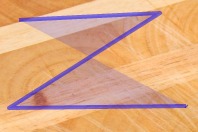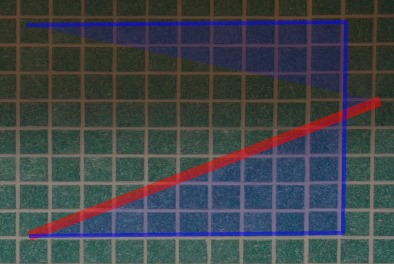Instructions
What to draw
Please draw shapes around regions that have a single material or texture. Some example materials: wood, steel, bricks, tiles, ceramic, plastic. If you don't know what to draw, floors, walls, and countertops are usually one material -- just be careful to exclude things on top.
Please make the region as tight as possible. Your shape should exactly follow the material boundary. Use the "adjust" button (or press 'A') to improve the shape boundary.
If there is something like a brick wall or tiled floor, please include all the tiles; do not draw a square around one tile. Large regions are preferable.
Example: if a wood cabinet has a metal handle, then the metal portion is a different material and should be excluded. If you are drawing a shape around a person, their skin and clothing should not be in two different shapes. You can also exclude regions by overlapping shapes. See the below examples.
Draw six polygons to complete the task.
Good examples
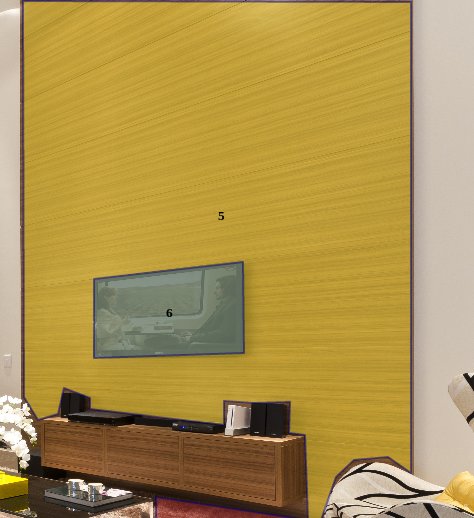
Large flat regions are preferable, though not necessary.

Make the boundary as tight as possible.
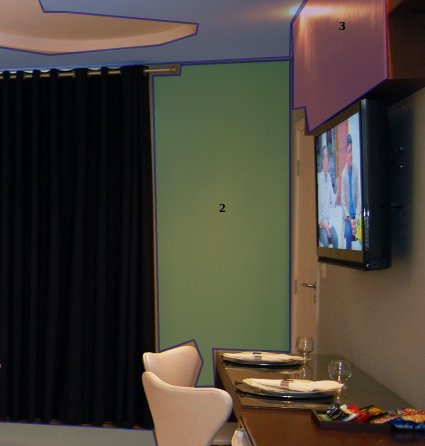
Be careful to not include items of a different material.

Shapes can be nested.
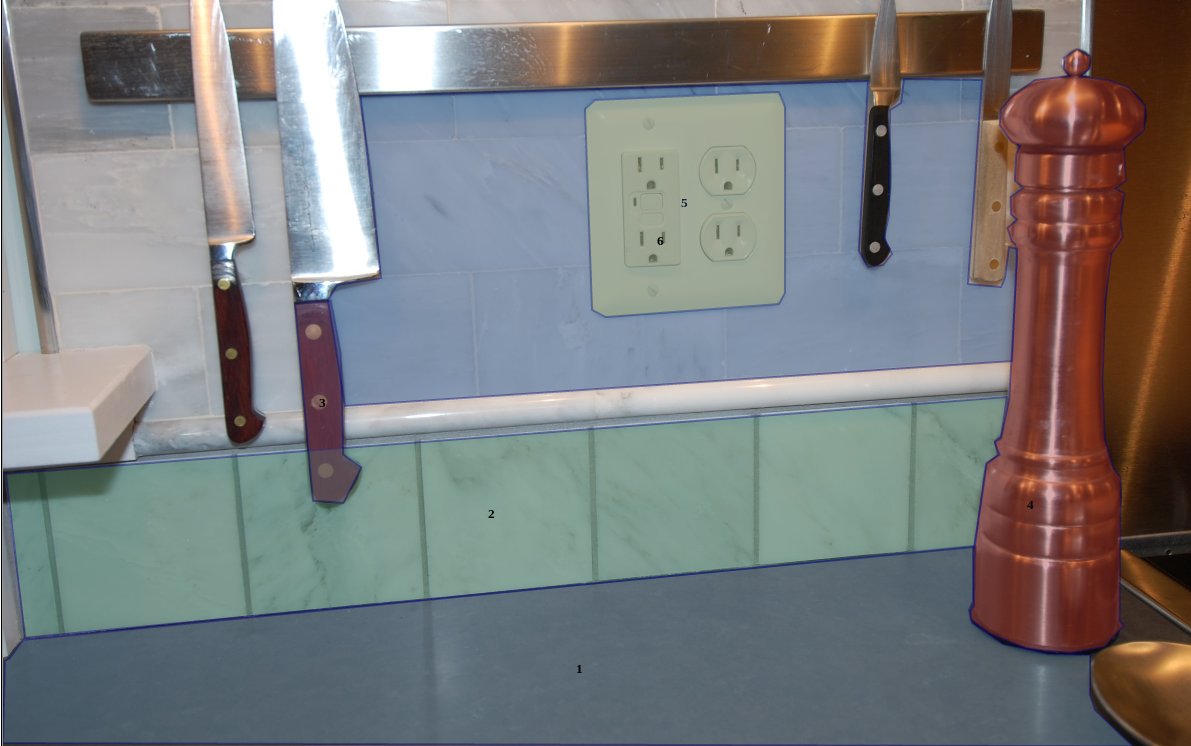
Shapes can intersect.
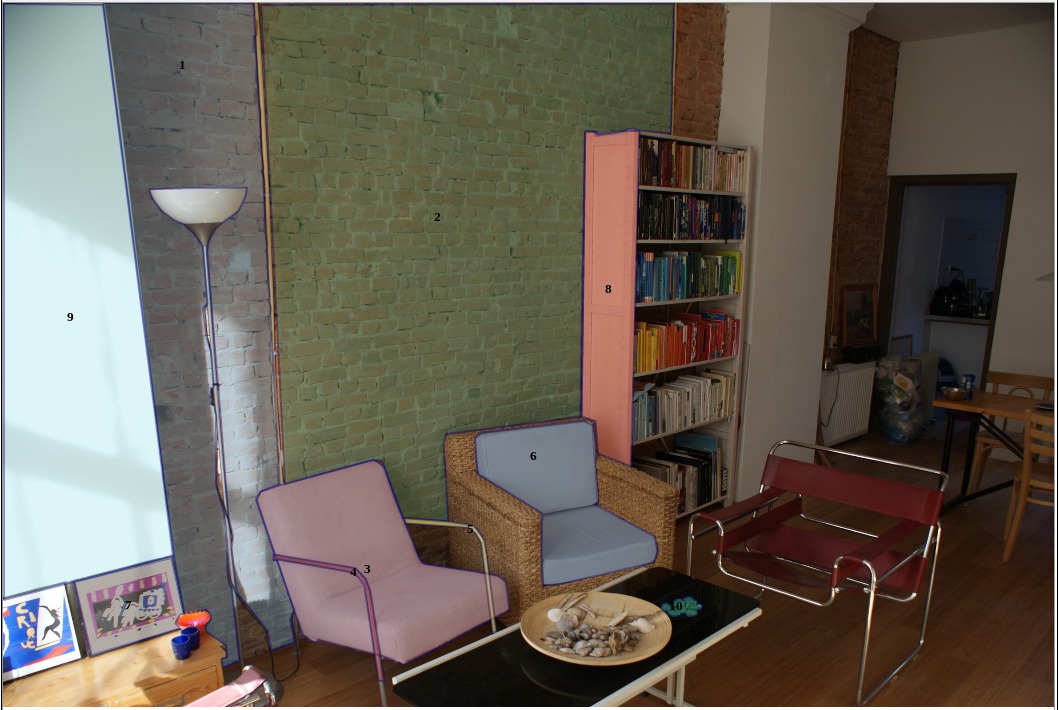
Please do not draw around individual bricks; draw a shape around larger wall portions.
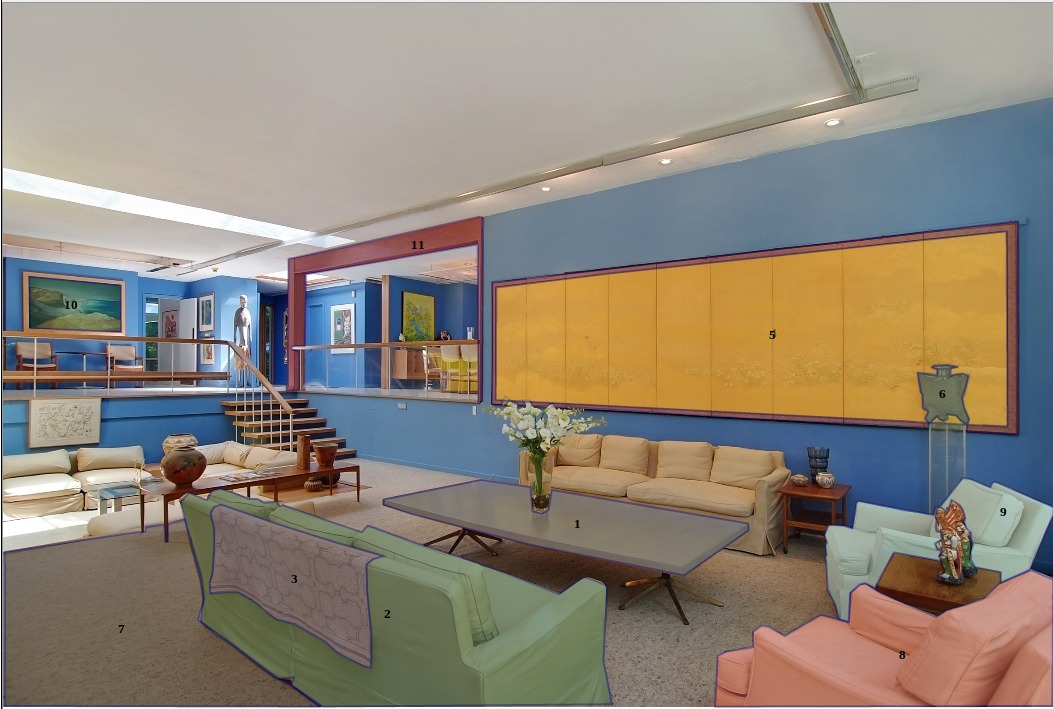
Bad examples
We will reject HITs that do not follow these instructions.
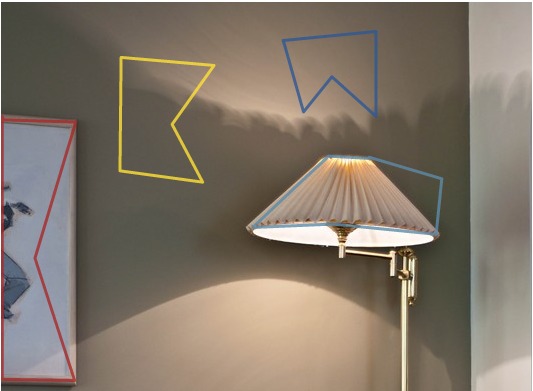
These are sloppy shapes.
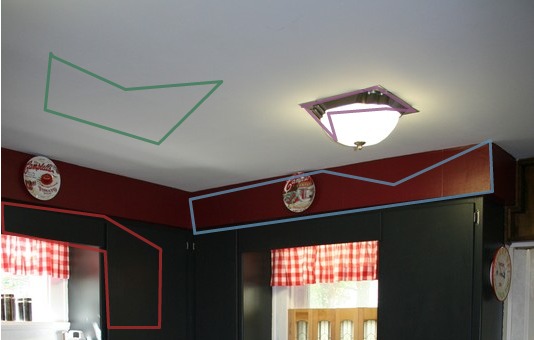
Please do not do this.
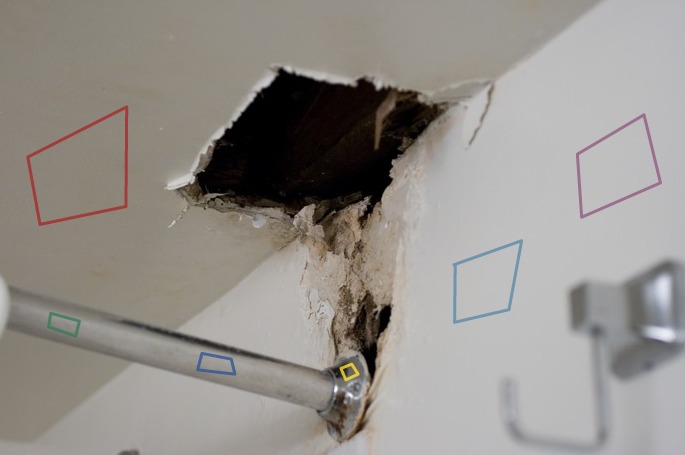
Please make the regions bigger than this.
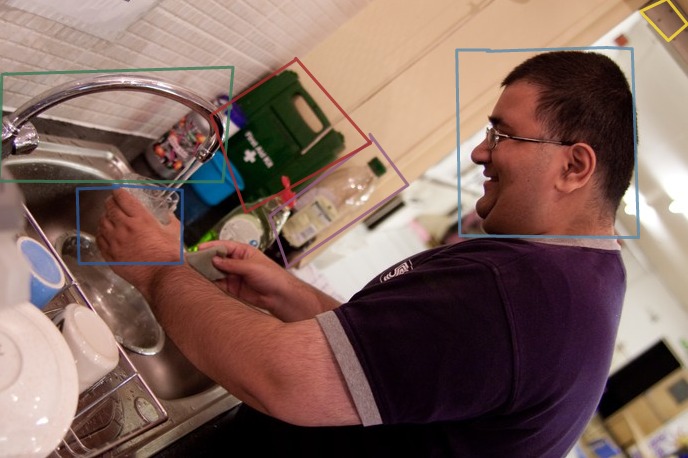
These shapes contain multiple materials and are nowhere near the correct boundaries.
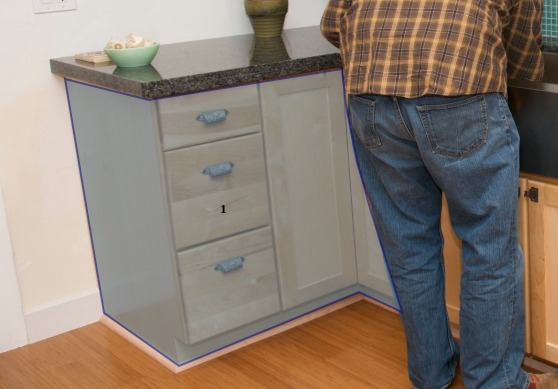
This shape includes more than one type of material.
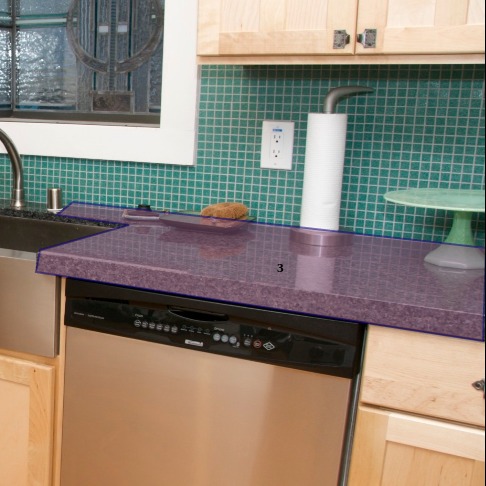
This includes other objects; the other objects should have shapes around them.
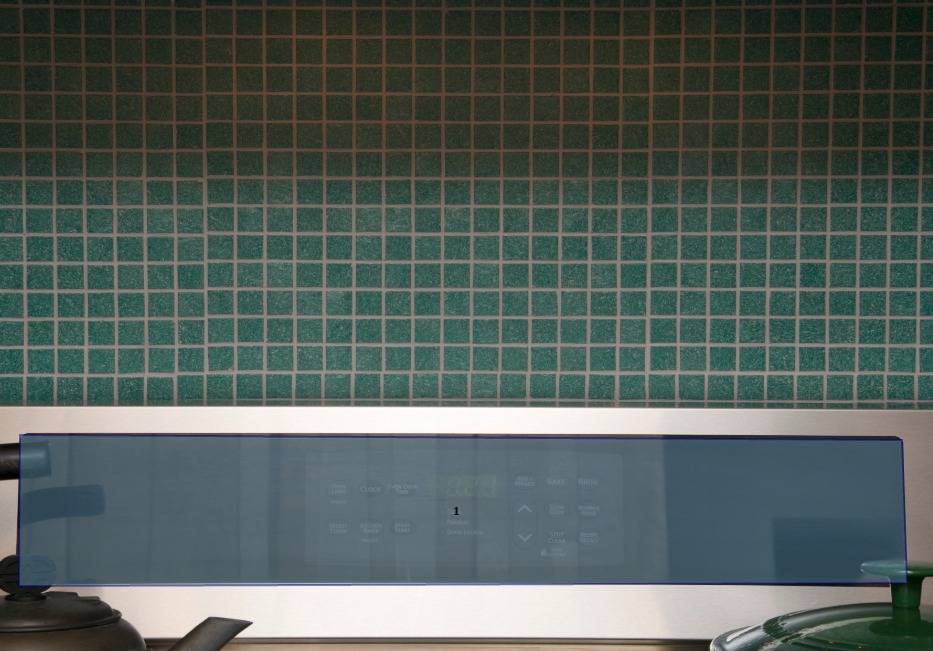
This includes the edges of other objects.
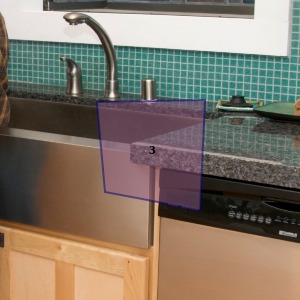
This shape is too sloppy.
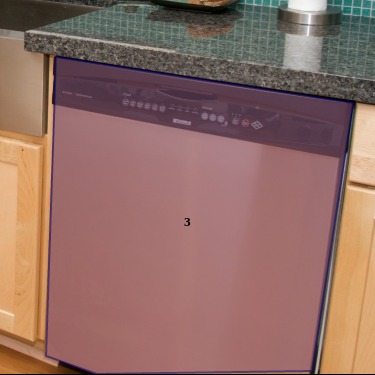
This contains more than one type of material.
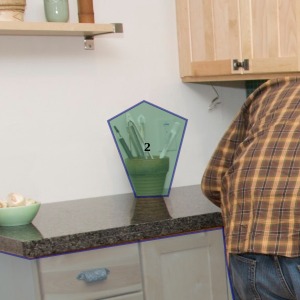
This contains many substances.
How to draw
-
1 Click on the material boundary.
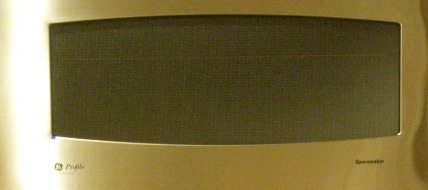
-
2 Continue clicking along the boundary.

-
3 Right-click to close the polygon.

To close the shape, you do not need to click near the first point. You can right-click to connect the first and last point.
Adjust your shapes
After drawing a polygon, please adjust its edges so that it better fits the true boundary. When you are done adjusting, switch back to "Draw" mode to draw more polygons.
You can press the D and A key to quickly switch modes.
-
1 Switch to "Adjust" mode.
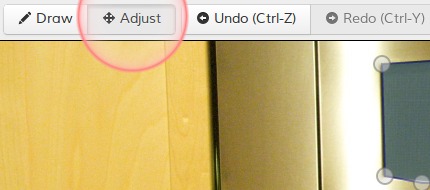
-
2 Click on the polygon.
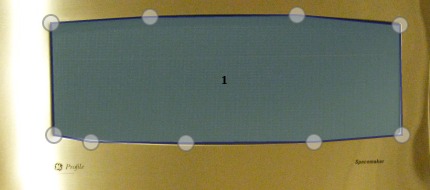
-
3 Drag the small white circles.
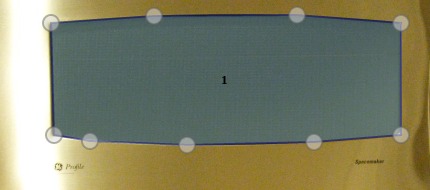
Zoom in to see better
Scroll with the mouse wheel to zoom in. Click "Reset Zoom" or press escape to reset back to normal.
Move around in the image
Press 'space' and drag with the mouse to move around in the image (panning). You can also move press the arrow keys to move.
Other controls

- Undo
- If you make a mistake, click "Undo" or press Ctrl-Z.
- Redo
- You can also re-do an action with Ctrl-Y.
- Close
- To close a polygon, right-click on the image or you can click the "Close" button.
- Delete
- You can delete polygons by selecting them with the "Adjust" button and pressing delete.
- Reset Zoom
- When zoomed in, you you can click "Reset Zoom" to zoom out again.
- Instructions
- Show this page during the task.
Mirrors and windows
If there is a mirror, draw a shape around the mirror surface itself, not the things that you can see in the reflection. Similarly, draw a shape around the window glass, and not the things you can see through the window.
Why are we doing this?
We are building a database of materials from images on the web. This is part of ongoing research at Cornell University.
Thank you for participating!
